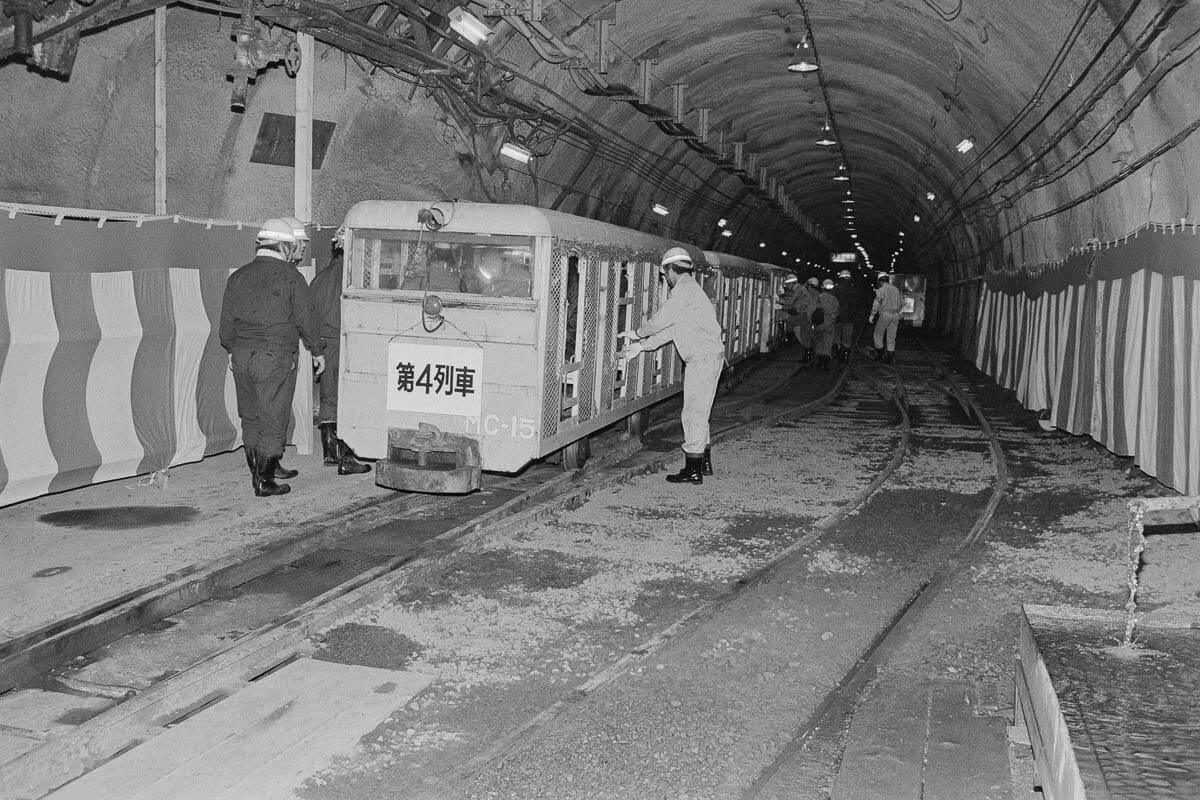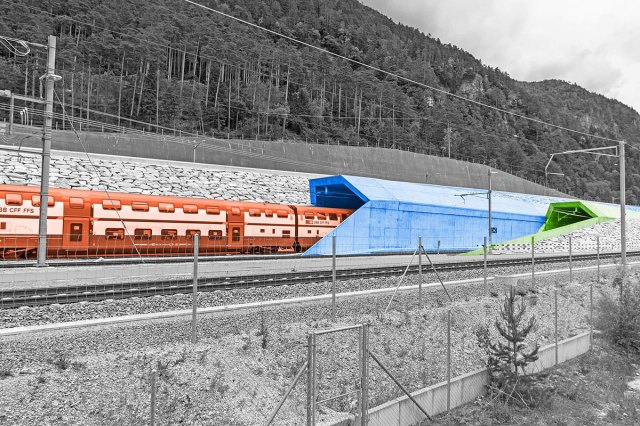
China: New Guanjiao Tunnel (20.3 miles)
The New Guanjiao Tunnel sits at 10,800 feet above sea level and comprises part of the highest-altitude railway in the world, the Qinghai-Tibet Railway. It’s also one of the longest tunnels in China, with Dongguan’s Songshan Lake Tunnel beating it by a mere 3.97 feet. As a part of the 1,125-mile railway system connecting China and Tibet, New Guanjiao is one of three high altitude tunnels on the track. Since the railway runs at such a high altitude, the train carries supplemental oxygen for any passengers suffering from altitude sickness. The New Guanjiao Tunnel, which replaced an older tunnel that was only 2.5 miles long, took seven years and a dual boring system to finish. It runs directly through a Tibetan plateau, reducing travel time within the tunnel from 2 hours to a mere 20 minutes.

England and France: Channel Tunnel (31.3 miles)
Also called the Chunnel or Eurotunnel, the Channel Tunnel connects Folkestone, England, and Sangatte, France, and actually consists of three parallel tunnels — two for railways and one for security cars and emergency services. Named for the body of water that the tunnel bisects, this underwater passageway is considered a feat of engineering and has been named one of the “Seven Wonders of The Modern World." Eleven tunnel boring machines were used to dig the tunnel on either side of the channel. On the British side, the debris was carried out of the tunnel using a railway conveyor belt system; on the French side, it was combined with water and transported through a pipeline.

South Korea: Yulhyeon Tunnel (31.3 miles)
Tied with the Channel Tunnel for the world’s third-longest railway tunnel, South Korea’s Yulhyeon Tunnel is a single-tube, double-track tunnel that is part of the Suseo High Speed Railway, connecting Seoul and Pyeongtaek. The tunnel was primarily built using the New Austrian Tunnel Method (NATM), a construction method that is best employed with variable rock and soil conditions. Although it is the same length as the Channel Tunnel, Yulhyeon took much less time to complete — three years and five months — since it is not underwater, and much of the blasting occurred in a landscape with low mountains and without aboveground urban development to impede progress.
More Interesting Reads

Japan: Seikan Tunnel (33.5 miles)
Until recently, the Seikan Tunnel held the record for the world’s longest tunnel. The tunnel travels below the Tsugaru Strait, connecting Honshu Island and Hokkaido Island in Japan. Servicing both passenger bullet trains and freight trains, nearly 15 miles of the man-made tunnel are located underwater. To make this subaquatic section, engineers blasted 2,900 tons of explosives in an area prone to dangerous earthquakes. The land section was created by conventional boring methods. It took 17 years to complete the tunnel, during which time 34 lives were lost due to accidents on the job, including cave-ins and floodings. Still, the underwater train has proved a much safer form of travel than the former inter-island ferry system that was often subject to dangerous weather conditions.

Switzerland: Gotthard Base Tunnel (35.4 miles)
In 2016, the Gotthard Base Tunnel overtook Seikan for the longest tunnel in the world. To top that, it’s also the deepest tunnel in the world, extending to 8,000 feet underground. The tunnel, which took 17 years to complete, runs a high-speed rail beneath the Swiss Alps, connecting northern and southern Europe. To build the tunnel, engineers faced an immense challenge with the rock’s unpredictability. Some rock was too soft, making it difficult to excavate and slowing down the work. When the conditions were right, however, the workers used a 30-foot tunnel boring machine that was able to dig a record-breaking 131 feet in a single day.











